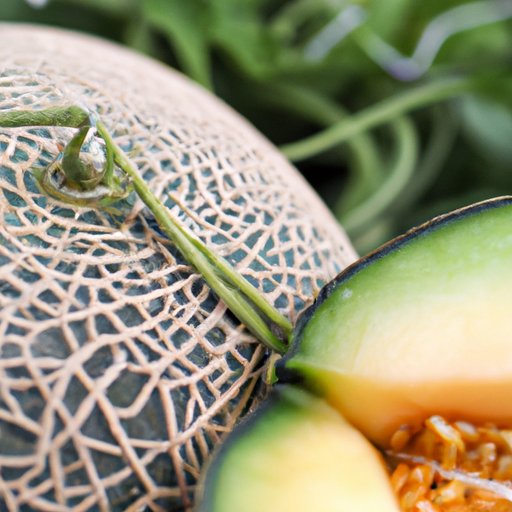Introduction
Are you tired of cutting into unripe cantaloupes and being disappointed by the bland taste and hard texture? It can be challenging to determine when a cantaloupe is perfectly ripe, but fear not, there are tricks to ensure you get the most flavorful and juicy fruit possible. In this article, we’ll explore different ways to tell if a cantaloupe is ripe, including examining color, smelling the fruit, pressing the skin, checking the stem, listening to the sound, and inspecting the webbing.
Look at the color
One of the first things to examine when checking the ripeness of a cantaloupe is the color. A ripe cantaloupe should have a golden yellow or orange hue. If the fruit is still green or has pale colors, it is not yet ripe and may continue to ripen for several more days.
Smell the fruit
The aroma of a ripe cantaloupe is one of the most delightful features of the fruit. At the stem end of the cantaloupe, take a deep sniff. A ripe cantaloupe should smell sweet and fragrant. If there is no smell or an unpleasant odor, the fruit is not ready to eat.
Press the skin
Another way to determine the ripeness of a cantaloupe is to press the skin slightly. A ripe cantaloupe should give a little when pressure is applied and be slightly soft to the touch. If the skin is too hard or extremely soft and mushy, the fruit is not ripe yet or over-ripe.
Check the stem
The stem of the cantaloupe can also be an indicator of ripeness. Locate the stem end and apply gentle pressure. If the stem gives way slightly, it is a sign that the fruit is ripe. If the stem feels dry, brittle, or hard, it is not yet ripe.
Listen to the sound
Believe it or not, you can tell the ripeness of a cantaloupe by tapping it with your knuckles. A ripe cantaloupe makes a dull, low-pitched sound, similar to tapping your forehead, while an unripe fruit makes a high-pitched or hollow sound.
Check the webbing
The webbing on a cantaloupe is the lacy pattern of light brown or tan lines that cover the fruit’s surface. Ripe cantaloupes have pronounced and raised webbing, while unripe cantaloupes have little to no webbing. If the markings on the skin are flat or smooth, the fruit is not yet ripe.
Conclusion
Remember that different cantaloupes ripen at different rates depending on the season and the grower. When shopping for cantaloupes, try to use a combination of these techniques to help you identify a ripe fruit. Examine the color, smell the fruit, press the skin, check the stem, listen for the sound, and inspect the webbing. Once you find a ripe cantaloupe, enjoy it quickly, since these fruits can spoil quickly.
By using these tried-and-true methods, you can now confidently select the perfect cantaloupe for your next fruit salad, smoothie, or snack.
